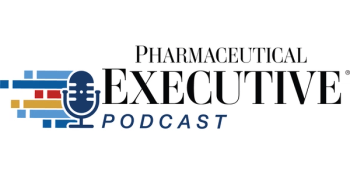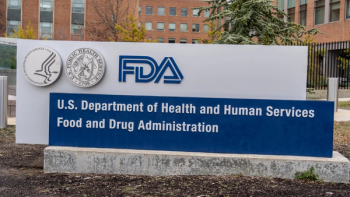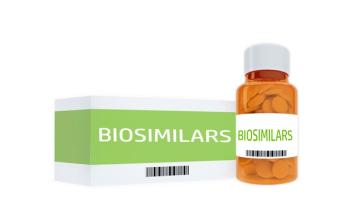
Early Data on ABBV-706 Suggests New Hope for Neuroendocrine Tumor Patients
Pedro Valencia, VP, asset strategy leadership, oncology, AbbVie, discusses how early data from ABBV-706 shows up to 50% response rates in rare neuroendocrine tumors, offering a potential advance over traditional chemotherapy.
In an interview with Pharmaceutical Executive, Pedro Valencia, VP, asset strategy leadership, oncology, AbbVie, discussed the company’s expanding efforts in solid tumors, a space where it is still relatively new compared to its established presence in hematologic cancers. Speaking on the sidelines of the 2025 ASCO Annual Meeting, Valencia outlined AbbVie’s strategy for prioritizing tumor types and investigational therapies within its pipeline, emphasizing a data-driven, patient-centric approach. From recent antibody-drug conjugate (ADC) approvals to promising early signals in rare neuroendocrine tumors, AbbVie is rapidly evolving its oncology footprint with the goal of transforming treatment paradigms and reducing reliance on traditional chemotherapy.
Pharmaceutical Executive: How do the results from ABBV-706 in neuroendocrine neoplasms influence AbbVie’s future clinical development plans for SEZ6-targeting agents, particularly given the rarity and heterogeneity of these tumors?
Pedro Valencia: ABBV-706 targets SEZ6, which is a lineage marker expressed in a number of neuroendocrine neoplasms, or neuroendocrine tumors. A lineage marker means it plays a critical role in the development and growth of those tumor cells.
The way this ties into our strategy is through small cell lung cancer (SCLC), which is itself a type of neuroendocrine tumor and expresses SEZ6 extensively. So, our primary focus for ABBV-706 is SCLC. We shared initial data at ASCO last year and look forward to sharing more updates later this year as we continue advancing the program in this setting.
That said, at AbbVie, we’re always thinking about the broader patient population that could benefit from our therapies. We conducted an exploratory analysis to evaluate ABBV-706 in other neuroendocrine tumors beyond small cell lung cancer. These tumors are individually rare but collectively represent a significant patient population—many of whom are still being treated with older chemotherapy regimens.
The data we presented at ASCO this year showed response rates ranging from 30% to 50% across several of these tumor types. To put that in perspective, traditional chemotherapy options tend to yield response rates of only 10% to 20%. So, we’re very encouraged by these findings and are looking forward to further refining our development strategy in these areas as well.
Full Interview Summary: At the 2025 ASCO meeting, AbbVie highlighted its growing commitment to solid tumors by outlining how it prioritizes development within its oncology pipeline. While historically focused on hematologic malignancies, the company is now building momentum in solid tumors with an emphasis on unmet need, scientific opportunity, and potential for pipeline impact. AbbVie’s three current priority areas in solid tumors are gastrointestinal (especially colorectal), gynecologic (notably ovarian), and lung cancers. Recent approvals, including mirvetuximab for ovarian cancer and Teliso-V (telisotuzumab vedotin) for non–small cell lung cancer (NSCLC), mark significant progress.
Temab-A (and Teliso-V) targets c-Met, a protein overexpressed in multiple cancers, including lung, colorectal, pancreatic, and head and neck cancers. Its broad expression makes c-Met a strong target for tumor-agnostic development, akin to HER2 or PD-1 therapies. AbbVie is exploring this approach with Temab-A in a trial spanning at least seven tumor types, including lung and colorectal cancers being the most advanced.
Another investigational therapy, ABBV-706, targets SEZ6, a lineage marker in neuroendocrine tumors, including small cell lung cancer (SCLC). Data presented at ASCO showed encouraging response rates of 30–50% in rare neuroendocrine tumors—substantially higher than typical chemotherapy response rates. AbbVie plans to expand 706 into late-stage studies for SCLC and explore other neuroendocrine populations.
Patient advocacy is central to AbbVie’s strategy, helping inform development priorities beyond survival endpoints. For example, patient feedback highlighted Elahere’s ability to avoid alopecia as a significant benefit.
Key near-term milestones include pivotal trial launches and data readouts across lung (EGFR-mutant and wild-type NSCLC, SCLC), GI (colorectal and pancreatic), and gynecologic cancers. AbbVie also plans to expand next-generation ADCs, aiming to broaden activity across varying levels of FRα expression and further reduce chemotherapy reliance.
Newsletter
Lead with insight with the Pharmaceutical Executive newsletter, featuring strategic analysis, leadership trends, and market intelligence for biopharma decision-makers.




